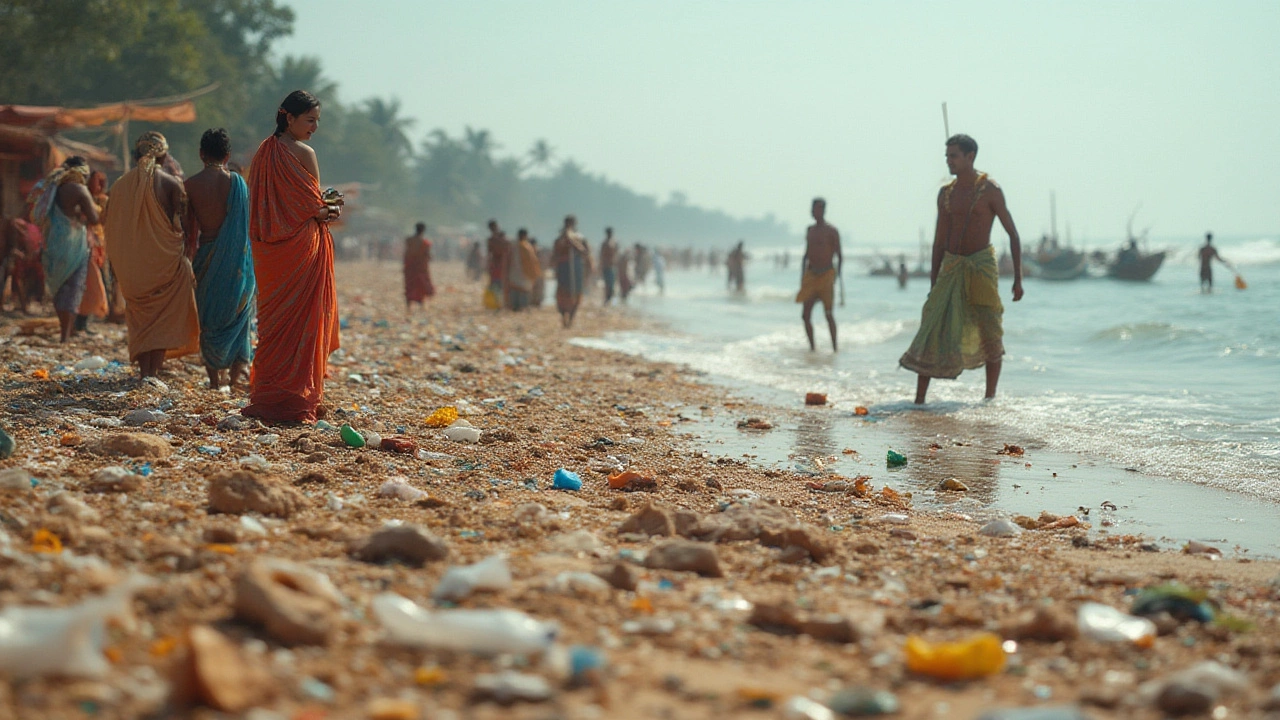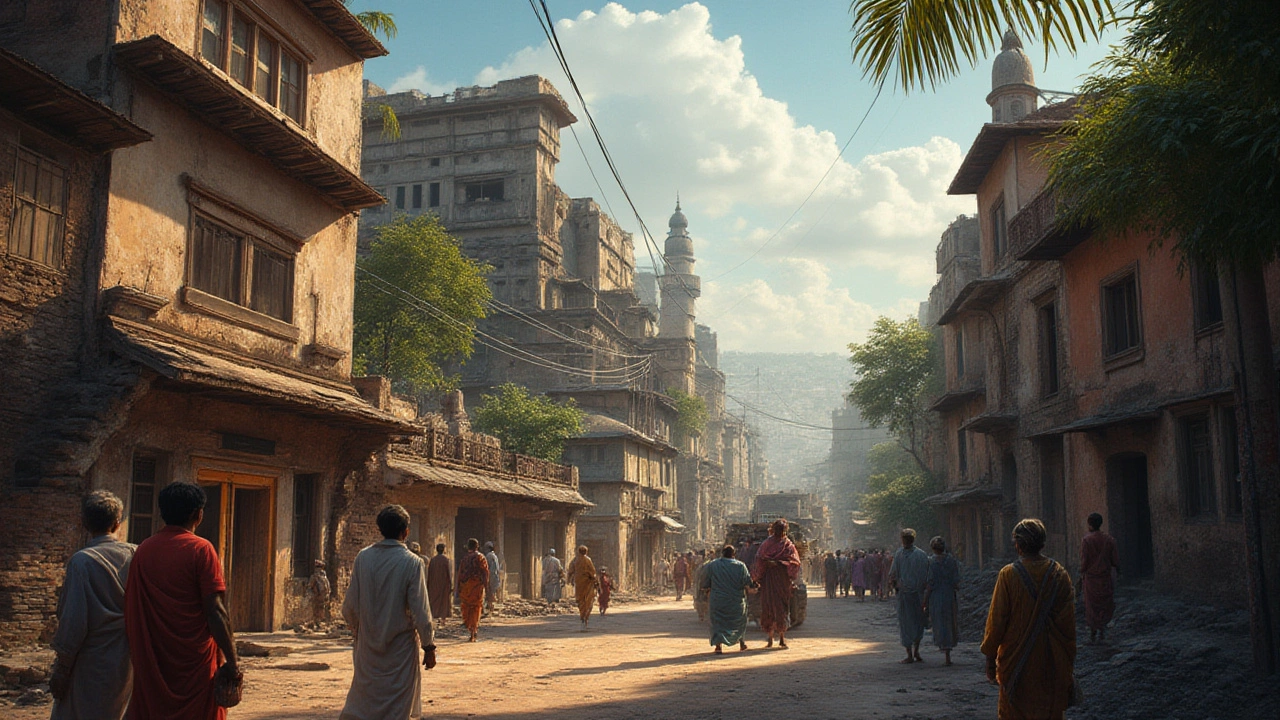-
5

3 Major Negative Impacts of Tourism on Local Environments and Communities
Nothing kills the magic of a place faster than crowds so thick you can barely see the spot you came for. Ever gone to a popular destination and felt like you were walking through a theme park instead of discovering a slice of local life? Tourism is a lifeline for many places, but let's be real: it leaves behind stubborn stains—on nature, daily life, and even the spirit of communities hosting millions of visitors. It's not just about the selfies and souvenir shops; it's about what's left when the tourist buses roll out at sunset.
Environmental Damage: Nature’s Heavy Toll
Think of a paradise beach in Thailand—soft sands, turquoise water, and palm trees. Now picture plastic bottles on the waves, coral reefs bleached and broken, and wildlife nowhere to be seen. The hard truth is, tourism is often not gentle with nature. More than a third of global tourism happens in areas rich in biodiversity, like coastlines or mountain forests. Every year, the world’s 1.4 billion tourists put massive pressure on these delicate spots.
One of the biggest issues? Waste. Tourists generate twice the garbage of locals. When you visit an island with no recycling system, that plastic water bottle probably ends up in a landfill—or worse, the ocean. A 2023 study found that popular Mediterranean beaches see trash increase by up to 70% in high season. The story’s similar in mountain regions like the Himalayas, where climbers leave behind tons of abandoned gear, cans, and even human waste.
There's also the climate cost. Flights release a shocking amount of carbon—one round-trip ticket from London to New York creates nearly 1.7 metric tons of CO2 per person. Multiply that by millions. Airports, cruise ships, and hotels drain energy and water. On small islands, resorts can swallow up half the freshwater supply, leaving locals to ration. In Bali, fields are turning brown as hotels and villas leave villagers with dry wells during peak holiday months.
Don’t forget about animals. When tourists get too close, feed or pose with wildlife, they disrupt natural behaviors, sometimes making animals sick or aggressive. In Thailand, the once-mighty population of Maya Bay’s blacktip reef sharks collapsed by 90% after droves of visitors trampled the shallow waters (the site was temporarily closed to let nature recover).
What can you do? Seek out eco-certified accommodations. Carry a reusable bottle and bag. Stick to marked trails—every step off-path can damage fragile plants. If you’re headed to a sensitive spot, research if the area is struggling and consider alternatives. Responsible travel can lower the load, but mass tourism is a tide that even the best intentions can barely hold back.
| Negative Impact | Location Example | Stat or Fact |
|---|---|---|
| Coastal pollution | Barcelona, Spain | Waste jumps 50% June-Sept |
| Coral reef damage | Great Barrier Reef, Australia | 1 in 3 reefs rated as highly degraded by 2022 |
| Plastic waste | Philippines beaches | 30% increase during high tourism periods |

Cultural Disruption: Traditions on the Edge
Tourism sells the idea of authentic local culture. But too much spotlight can rewrite the script fast. What starts as a folk dance to mark a harvest becomes a daily performance, not for the village, but for jet-lagged strangers. You might have laughed watching a "traditional" cooking lesson—only to realize that locals rarely eat what's in your pan.
Here's what happens: when tourism money floods into a town, it changes what people value. Handmade crafts get adapted for quick sales; celebrations morph to fit visitors’ expectations. Take Venice, Italy. It hosts about 20 million tourists each year. That’s over 60,000 people daily—a number that dwarfs the city’s real residents. Stores selling pizza and Murano glass replace old bakeries and bookstores. Fewer native Venetians can afford to stay because rents spike. Kids leave for bigger cities, and real community life thins out, replaced with a parade of day-trippers.
Language loss is a hidden wound. In places like the Maasai region of Kenya or the Himalayas, younger generations focus on English and hospitality jobs, drifting away from their ancestral tongues and traditions. A study in Nepal found that 70% of teens in major trekking towns preferred using English daily, even at home. Customs and dress become costumes, art is remade for souvenirs, and the real culture sometimes fades away.
Then there’s the issue of disrespect—unknowing but hurtful. Tourists in Bali have climbed holy temples in swimwear, not knowing (or caring) that it’s deeply offensive. Religious festivals in India and Japan get interrupted by selfie sticks and flash photography. Locals used to sharing important moments in private now perform for an audience, losing intimacy and meaning.
Is there a way to appreciate a culture without trampling it? Absolutely. Dig deeper than the tourist brochures. Learn a few greetings in the local language. Buy from small producers instead of chain stores. When watching a festival, stay in the background—look, listen, don’t interfere. Avoid homespun experiences that exist only for tourists. And ask before taking photos—sometimes, a smile is the best souvenir you can take home.
| Type of Disruption | Country/Region | Example/Stat |
|---|---|---|
| Rising housing costs | Barcelona, Spain | Rents up 40% since 2012 due to Airbnbs |
| Cultural festival changes | Japan | Gion Matsuri parade timing changed for tourists |
| Language loss | Nepal Himalayas | 70% of teens use English at home during season |

Strain on Local Communities: The Hidden Price Tag
Imagine living in a neighborhood where the grocery store suddenly stocks more postcards than produce. Or where your local café doubles food prices during holiday months. Tourists bring money, yes—but the wealth doesn’t always trickle down, and daily life can turn upside down for the people who call these hotspots home.
One brutal reality is the cost of living. Rents, food, and goods skyrocket in places overwhelmed by short-term rentals and visitor demand. In Lisbon, Portugal, locals have blamed tourism for a 70% increase in rents over a decade. In Dubrovnik, Croatia—where "Game of Thrones" scenes fuel boatloads of fans—most old-town apartments are now Airbnbs. Long-term tenants are squeezed out, and once-lively neighborhoods turn into ghost towns between waves of tourists.
Infrastructure takes a beating, too. Roads, sewage systems, and public transport made for locals now endure the strain of millions more. Venice’s Grand Canal ferries over 25 million people a year, but the city's waste systems can't keep up. Sewage leaks, and parts of the lagoon are polluted. Small towns see similar crises: in Machu Picchu’s gateway village, water shortages and overflowing landfills are a seasonal curse.
Job trends shift. Tourism jobs can seem flashy and fun, but they’re often seasonal, low-paid, or unstable. Dependence on a single industry is dangerous. In 2020, when COVID-19 halted travel, dozens of famous destinations—from Phuket, Thailand to Queenstown, New Zealand—were left floundering. Restaurants and tour companies vanished overnight, and thousands lost work. Locals who had turned family homes into guesthouses suddenly found themselves with empty rooms and no backup plan.
Safety, too, is an issue. Crowds attract pickpockets and scam artists. In some Caribbean islands, crime rates jumped as tourist numbers grew. Residents worry about noise, traffic jams, and even the risk of disease: crowded tourist sites can become hotspots for everything from seasonal flu to COVID variants. This affects schools, hospitals, and emergency services, which now have to stretch thin to cater to both locals and extra guests.
But don't blame travelers for all the woes—sometimes it's about how tourism is managed. Cities like Amsterdam have tried simple solutions, like daily visitor caps or higher taxes on day-trippers. Others limit cruise ship arrivals or enforce noise curfews. These measures help, but solving the problems takes balancing acts and cooperation.
- Book with small, locally run hotels or guesthouses.
- Visit off-peak or discover lesser-known towns.
- Respect local rules, from noise curfews to bike lanes.
- Support businesses that hire locals, not just foreign chains.
The next time you travel, keep your eyes open—not just for the views, but for the lives happening all around you. The footprints we leave behind are bigger than we think.